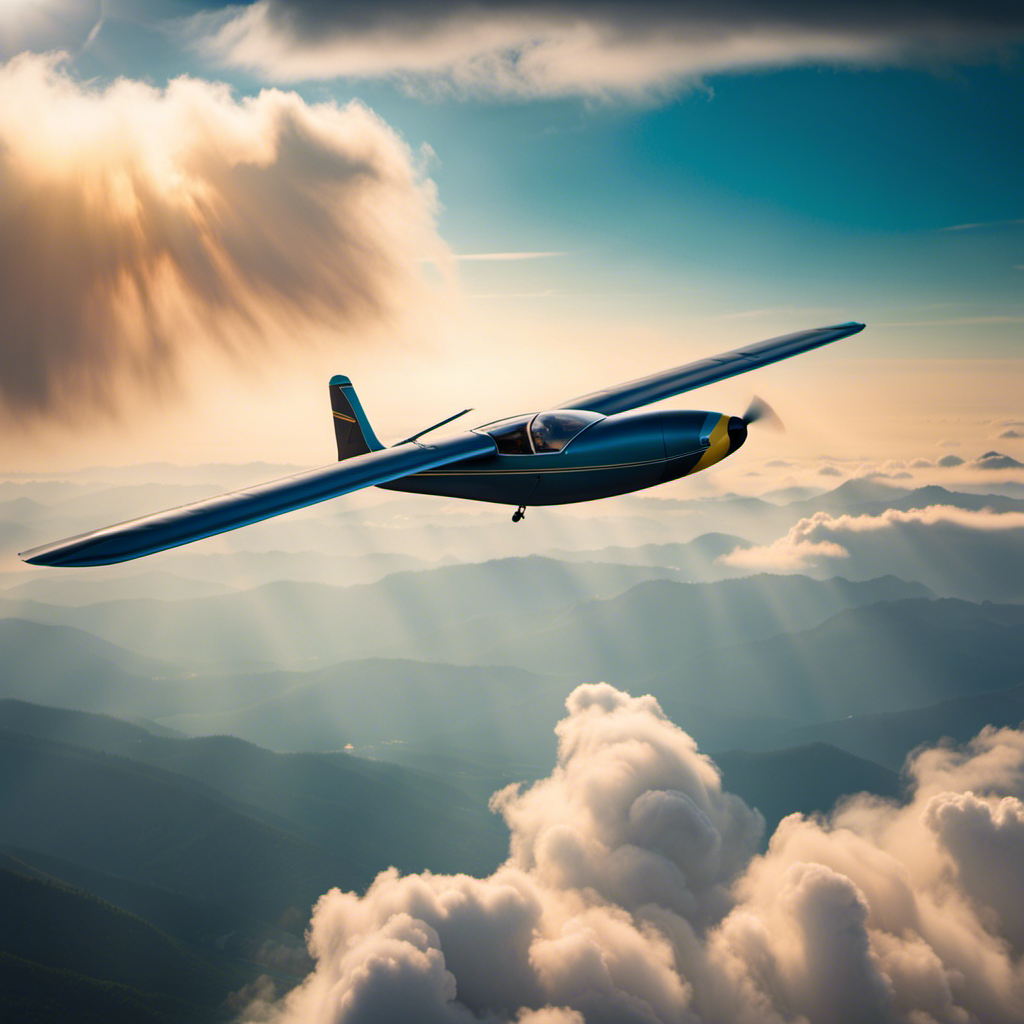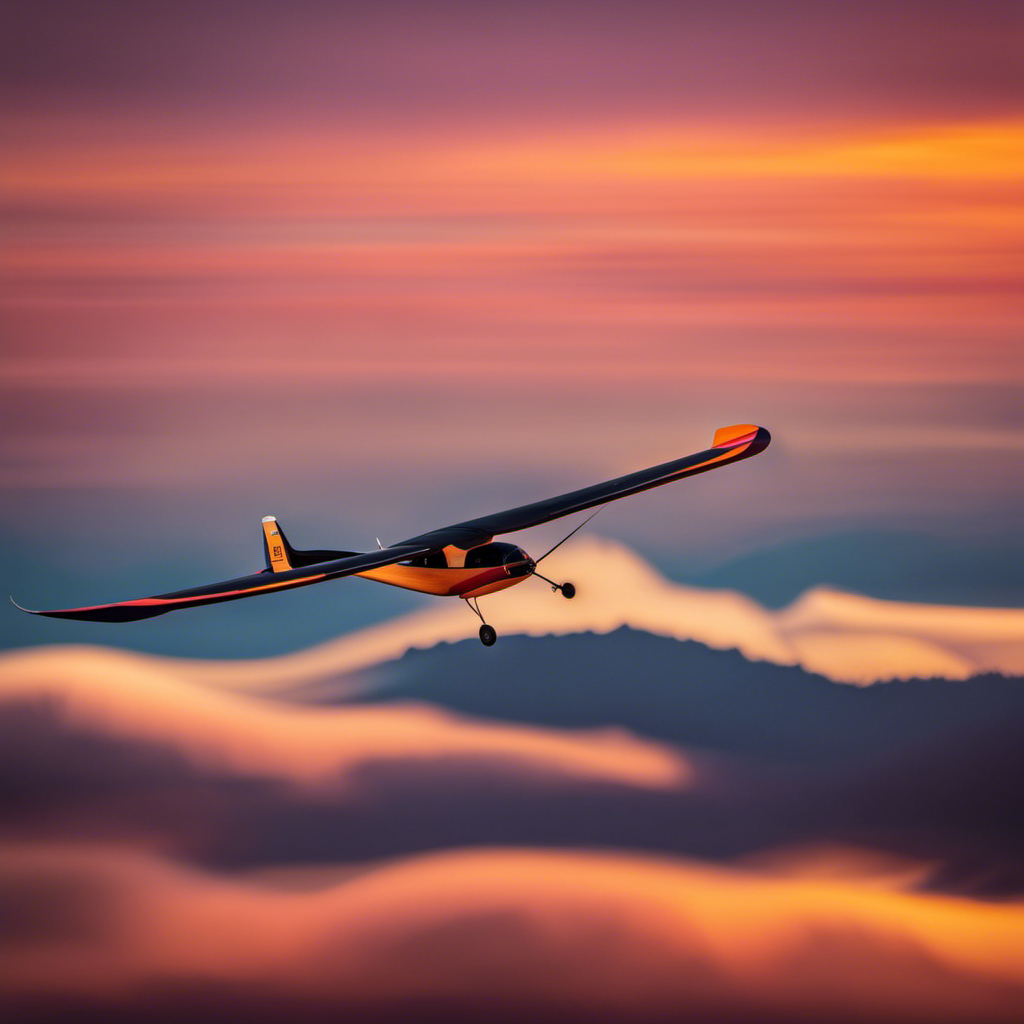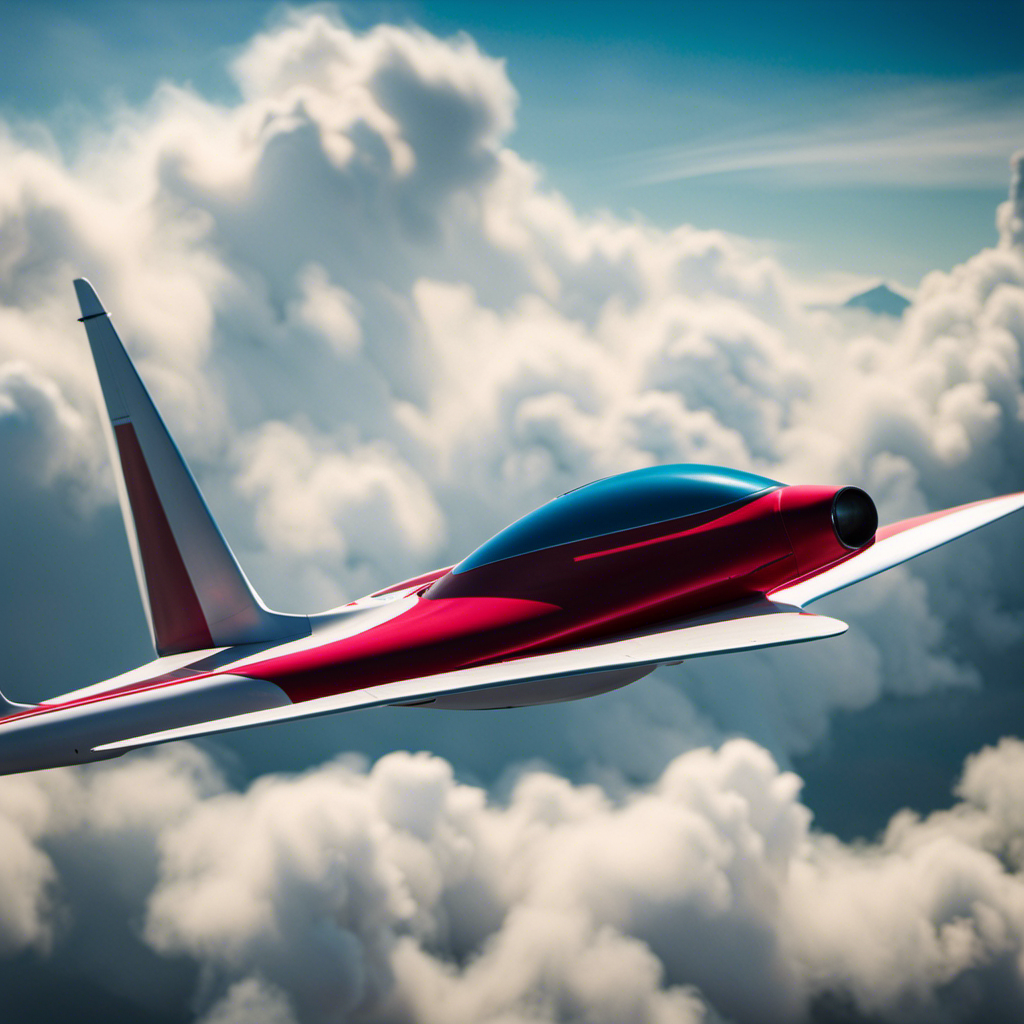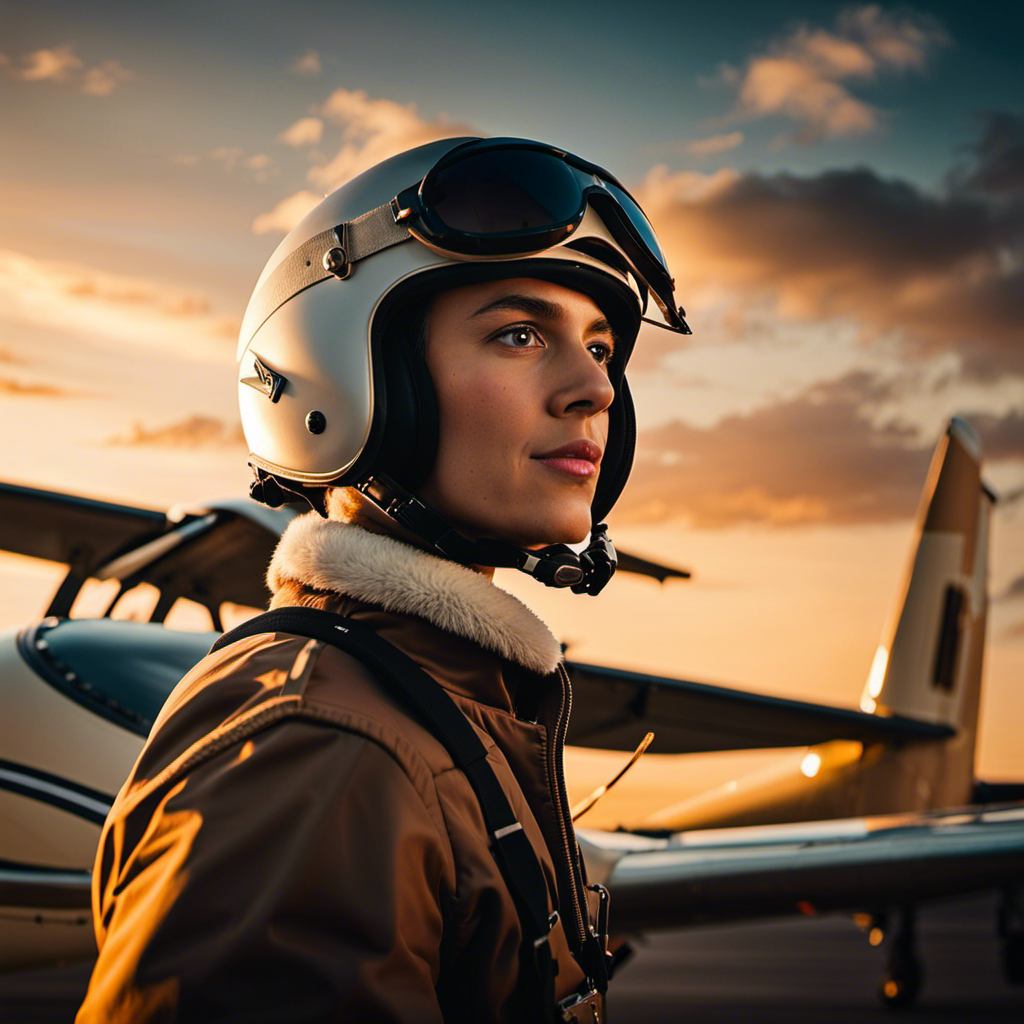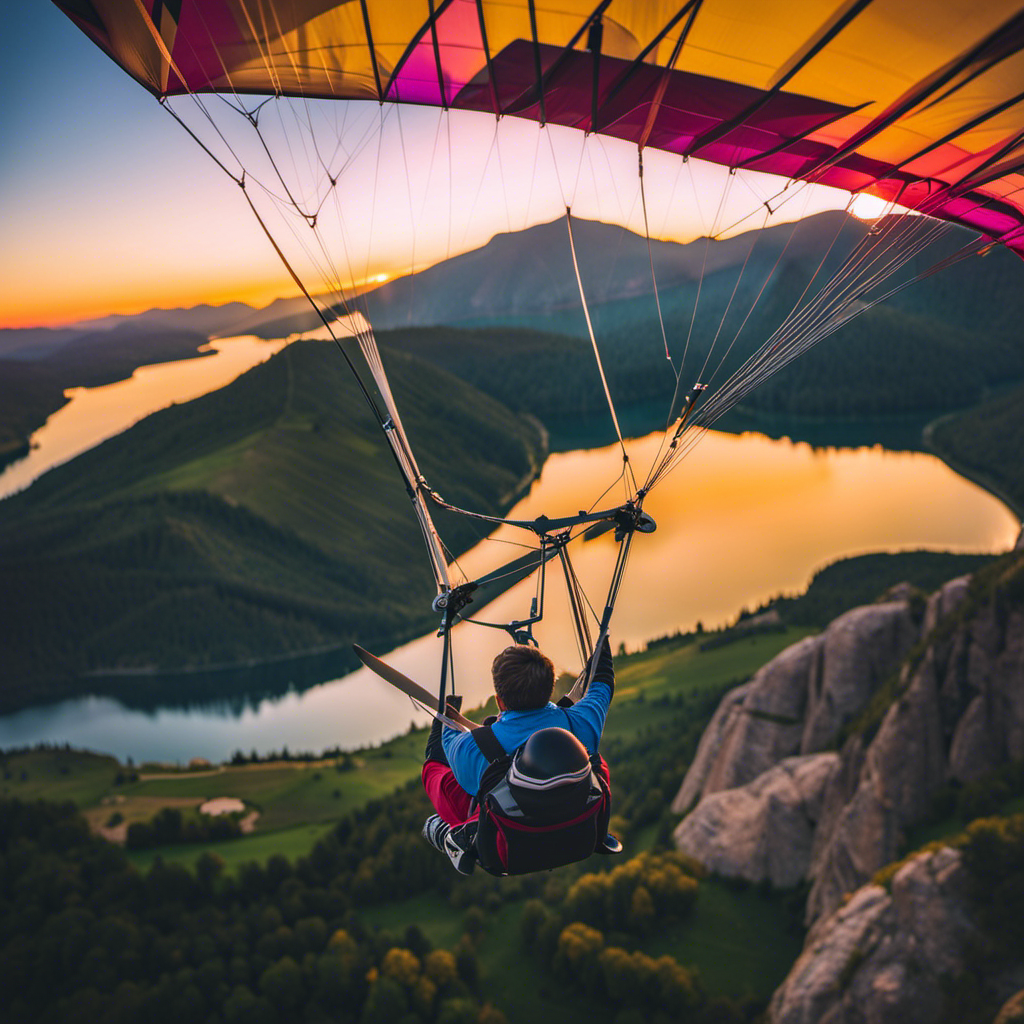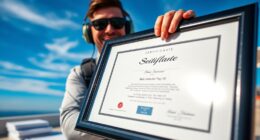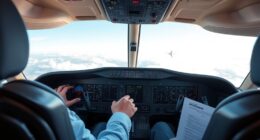Did you know that a glider can climb at a speed of up to 2,000 feet per minute? In this article, I will explore the factors that affect a glider’s ascent and suggest tactics that pilots can use to improve their upward progress.
From understanding the principles of lift to employing efficient flying techniques, we will delve into the technical aspects of glider design and the role of technology in improving climbing capabilities.
So, fasten your seatbelts as we take off into the world of glider climbing!
Key Takeaways
- Weather conditions, such as thermals, have a significant impact on the climb rate of a glider.
- Adjusting the angle of attack and seeking thermals and ridge lift can maximize lift and improve climbing efficiency.
- Proper weight distribution, including adjusting ballast and seat position, is essential for enhancing climbing capabilities.
- Aerodynamic modifications and advancements in propulsion systems contribute to faster ascent and improved climbing performance.
Understanding Glider Performance
Understanding how fast a glider can climb is essential for evaluating its performance. When it comes to glider aerodynamics, there are several factors that influence the climb rate.
One of the most significant factors is the weather conditions. Thermals, which are columns of rising warm air, can provide the necessary lift for a glider to climb rapidly. The ability to locate and utilize these thermals effectively is crucial for maximizing the glider’s climb rate.
Additionally, the design of the glider itself plays a vital role in its climb performance. Factors such as wing shape, aspect ratio, and weight distribution can all impact how quickly the glider can ascend.
Maximizing Lift
To maximize lift, you’ll want to ensure that the angle of attack is optimized. This means adjusting the angle at which the glider’s wing meets the oncoming air. By finding the right balance, you can generate the most lift possible for efficient climbing.
Two key factors that affect lift are thermals and ridge lift. Thermals are columns of rising warm air that gliders can use to gain altitude. Ridge lift, on the other hand, occurs when wind encounters a ridge or mountain and is forced to rise. Both of these phenomena can provide significant lift if properly utilized.
Additionally, maintaining proper weight and balance is crucial for maximizing lift. By distributing the weight evenly and ensuring that the glider is properly balanced, you can optimize its climbing capabilities.
Now, let’s explore efficient flying techniques that can further enhance climb performance.
Efficient Flying Techniques
Fly efficiently by adjusting your body position and making small corrections to maintain a steady glide path. Here are some techniques I use to maximize efficiency and take advantage of thermals and ridge soaring:
- Stay light: Minimize unnecessary weight by removing any excess items from the glider.
- Balance it out: Ensure proper weight distribution by adjusting the ballast and seat position.
- Seek thermals: Look for rising air pockets, known as thermals, and fly in circles within them to gain altitude.
- Utilize ridge lift: Fly close to the ridge line of a hill or mountain to catch the upward wind generated by the terrain.
By implementing these techniques, I am able to optimize my glider’s performance and climb efficiently.
Transitioning to the next section, the role of glider design plays a crucial role in achieving higher speeds and improving overall flight performance.
The Role of Glider Design
When it comes to optimizing your performance and improving overall flight capabilities, the role of glider design cannot be underestimated.
Aerodynamic modifications and proper weight distribution are key factors that contribute to a glider’s ability to climb efficiently. By making aerodynamic modifications to the glider’s wings, such as adding winglets or changing the airfoil shape, the drag can be reduced, allowing for better lift-to-drag ratio and improved climbing performance.
Additionally, the proper distribution of weight, including the pilot’s position, is crucial for maintaining stability and control during ascent. These design considerations play a vital role in maximizing a glider’s climbing capabilities and enhancing its overall flight performance.
Moving forward, let’s explore the technology that has been developed to further improve climbing performance without compromising safety.
Technology for Improved Climbing Performance
The latest technology has significantly enhanced climbing performance in gliders. With improved propulsion systems and aerodynamic advancements, gliders are now capable of reaching higher altitudes at faster rates. These advancements have revolutionized the sport of gliding, allowing pilots to explore new heights and push the limits of their aircraft.
The emotional impact of these technological advancements can be profound, evoking feelings of awe, excitement, and a sense of adventure. Imagine the rush of ascending rapidly through the sky, the thrill of soaring to new heights, and the exhilaration of conquering previously unattainable altitudes.
These technological innovations have truly opened up a world of possibilities for glider pilots, taking their flying experience to new heights.
As we delve into the next section on training and skill development, it becomes clear that these advancements have also raised the bar for pilots, requiring them to constantly adapt and refine their skills to fully harness the capabilities of these advanced gliders.
Training and Skill Development
You can enhance your climbing performance in gliding through dedicated training and skill development. By implementing specific training techniques and maintaining mental focus, you can maximize your abilities as a glider. Here are some key training techniques and tips that can help improve your climbing performance:
| Training Techniques | Mental Focus |
|---|---|
| Interval Training | Concentration |
| Strength Training | Visualization |
| Aerobic Conditioning | Positive Thinking |
| Flexibility Exercises | Mental Toughness |
| Cross-Training | Goal Setting |
Interval training involves alternating between intense bursts of climbing and periods of rest. This helps improve your stamina and endurance. Strength training focuses on developing the muscles used in climbing, such as the arms, legs, and core. Aerobic conditioning improves your cardiovascular fitness, enabling you to climb for longer periods without fatigue. Flexibility exercises increase your range of motion, allowing for more efficient movements while climbing. Cross-training, such as incorporating activities like yoga or swimming, can help improve overall fitness and prevent overuse injuries.
Maintaining mental focus is crucial for optimal climbing performance. Concentration allows you to stay focused on the task at hand, while visualization helps you mentally rehearse and prepare for climbs. Positive thinking boosts confidence and motivation, while mental toughness allows you to push through challenges and setbacks. Goal setting provides direction and purpose, helping you stay motivated and track your progress.
Frequently Asked Questions
What are the common safety precautions for glider climbing?
Common safety precautions for glider climbing include wearing safety equipment such as helmets and harnesses, and being familiar with emergency procedures. It is essential to prioritize safety and be prepared for any potential risks during the climb.
Are there any specific weather conditions that affect glider climbing performance?
The effect of wind on glider climbing and the impact of temperature on glider ascent are important factors to consider. Wind can either help or hinder a glider’s climb, while temperature affects air density and therefore the glider’s performance.
Can gliders climb faster when flying in a group or formation?
Flying in a group or formation provides gliders with group dynamics and aerodynamic advantages that allow them to climb more efficiently. This results in faster climbing speeds compared to flying solo.
What are the limitations of glider climbing performance at higher altitudes?
At higher altitudes, the limitations of glider climbing performance become evident. Factors such as reduced air density and decreased engine power hinder the rate at which a glider can ascend.
Are there any regulations or restrictions on glider climbing speed?
There are regulations and restrictions on glider climbing speed. These guidelines ensure safe operations and prevent excessive speeds that could lead to structural damage or loss of control. Compliance with these rules is essential for a smooth and secure flight.
Conclusion
In conclusion, the speed at which a glider can climb is dependent on various factors. These factors include glider design, efficient flying techniques, and pilot skill. By understanding glider performance and maximizing lift, pilots can improve their climbing capabilities.
Additionally, advancements in technology continue to enhance climbing performance. It is crucial for glider pilots to undergo training and skill development to fully utilize these advancements.
Ultimately, the ability to climb swiftly is a testament to the pilot’s expertise and the glider’s capabilities. This forms a harmonious alliance in the pursuit of soaring the skies.
With a heart that soars as high as the skies, Aria, affectionately known as “Skylark,” is the driving force behind Soaring Skyways. Her journey into the gliding world began as a young dreamer gazing up at the soaring birds, yearning to experience the weightlessness and freedom they embodied. With years of experience both in the cockpit and behind the scenes, Aria’s commitment to the gliding community is unwavering.
